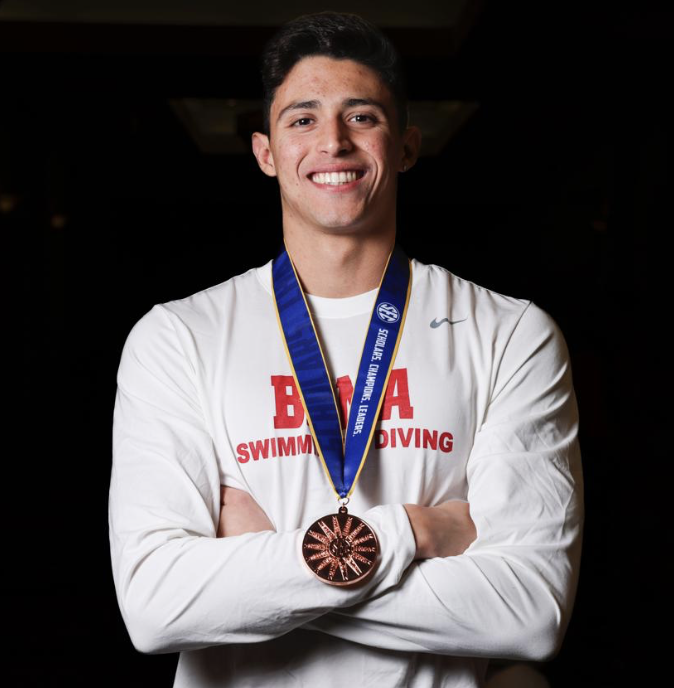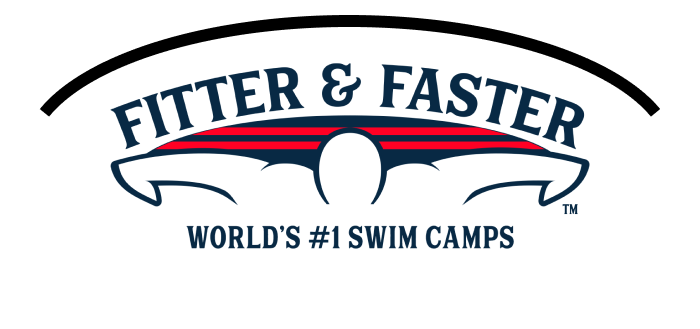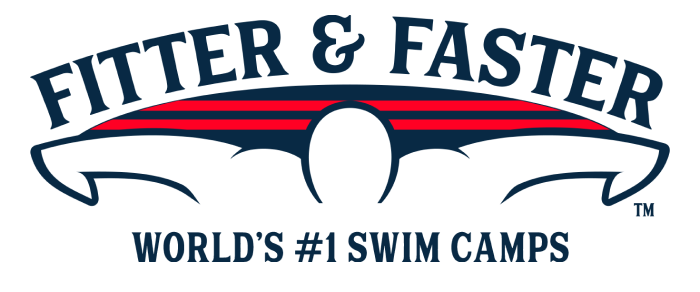Essential Skills for Faster Racing Swim Camp (Ages 10 & Over), Moultrie, GA
Moultrie Family YMCA
711 26th St SE,
Moultrie,
GA 31788
- days
- hours
- minutes
- seconds
Introduction
On Thanksgiving weekend, Fitter & Faster is producing a 2-day swim camp for competitive swimmers ages 10 & over at the Moultrie Family YMCA in Moultrie, Georgia on November 29 & 30, 2025!
ESSENTIAL SKILLS FOR FASTER RACING SWIM CAMP (Ages 10 & over)
DAY 1 (Saturday, November 29):
-> Session 1: Starts, Underwaters & Breakouts
-> Session 2: Freestyle Technique
DAY 2 (Sunday, November 30):
-> Session 3: Flip Turns, Open Turns & Finishes
-> Session 4: The Essentials of Sprinting
🔽 Scroll down for details on the curriculum!
✔️ Availability in each session is limited to 24 participants to ensure the highest level learning experience.
💡 SAVE when you purchase the “Entire Camp Bundle” for your swimmer.
🕘 SESSION START TIMES FOR BOTH DAYS:
-> Sessions 1 & 3: Check-in 9 AM, Camp 9:15-11:45 AM
-> Sessions 2 & 4: Check-in 12:15 PM, Camp 12:30-3 PM
Suggested Participants
Our top priority is to provide a world-class learning experience for all participants at all of our camps. This camp has sessions for swimmers ages 10 & Over. Participants will range from one-year of competitive swimming experience to AAAA times and faster. If you are the parent of a swimmer under the age of 10 and would like for your swimmer to be considered for this camp, please complete this questionnaire.
Curriculum
In this four-session swim camp, your swimmer will receive world-class guidance from elite clinicians at Fitter & Faster, focusing on key elements essential for enhancing overall racing performance! We understand that achieving peak performance demands ongoing refinement, which is why even the most elite swimmers are dedicated to perfecting the very skills we'll be honing with your athlete.
- Session 1: STARTS, UNDERWATERS & BREAKOUTS: The better a swimmer’s technique is off the starting block, the more speed they will carry into the water. Day 1 of this swim camp will help your swimmer improve their start, underwater dolphin kicking and breakouts! This sequence is not only the fastest part of every race, but it is also the part of the race in which elite swimmers cover the most ground with the most efficiency.
- Block Starts: To ensure an explosive start, a swimmer needs to set themselves up properly on the block. The elite clinicians will work with participants on the optimal positioning of your swimmer’s entire body to allow for a quick reaction time and optimal speed.
- Water Entry: Starting the race with a smooth entry into the water will boost your swimmer's speed and carry the momentum generated off the block or wall. Becoming skilled at the water entry is crucial for any start and significantly contributes to your swimmers' overall race!
- Streamline: The streamline - when done properly - is the fastest a swimmer travels while in the water. Proper streamlines are even faster than underwater dolphin kicking. Even the most elite swimmers in the world are constantly working on improving their streamline. Your swimmer will get tips to improve their streamline and a better appreciation of what they need to do on every single wall in practice and in races.
- Initiating Underwater Dolphin Kicking: Top age group and elite swimmers maximize their streamline on every single lap. They don’t start their underwater dolphin kicking while they’re still achieving maximum speed in their streamline! They also don’t want to start the underwater dolphin kicking after their streamline has begun to slow. Your swimmer is going to learn how to time when to begin their underwater dolphin kicking.
- Powerful Underwater Dolphin Kicking: There are a few different techniques that swimmers use when underwater dolphin kicking. The common theme of these techniques is that the best swimmers kick up and down with equal power. We will show your swimmer the different techniques that elite swimmers use and teach them how to implement.
- Number of Underwater Dolphin Kicks: Figuring out the optimal number of kicks off each wall, for each race, is essential to fast swimming. Elite swimmers want to spend only the absolute necessary amount of time underwater to establish speed with each length. They want to avoid losing their breath and taking weak kicks.
- Breakouts: Many swimmers unintentionally add movements in their breakouts that reduce speed by creating drag. In this camp, participants will focus on perfecting their breakout timing to maintain momentum and power into each lap.
- Session 2: FREESTYLE TECHNIQUE: Whether your swimmer is just learning freestyle or already competing at the high school level, it’s never too late to build strong habits. In this session, your swimmer will work on bodyline, rotation, breathing, kick, and pull—five key elements that contribute to an efficient, powerful freestyle.
- Bodyline: A streamlined body position is the foundation of a fast freestyle. Even small adjustments to head, neck, or back alignment can make a significant difference. As swimmers grow and mature, they often develop habits that disrupt bodyline. Your swimmer will learn how to maintain proper posture and engage the core to stay long and hydrodynamic through every stroke.
- Breathing: Efficient breathing is a challenge but critical to maintaining bodyline. Lifting the head too high causes hips to drop and drag to increase. Clinicians will work with participants to keep the head low and horizontal during the breath, using controlled rotation of the neck and body for a smooth, quick inhale.
- Rotation: Freestyle is most powerful when the swimmer rotates around their spine with each stroke. Rotation allows swimmers to use their back and core muscles during the pull, making the stroke stronger and more sustainable. Your swimmer will learn how to glide on one side and initiate rotation as the pulling hand begins its movement.
- Kicking: The kick is the motor of freestyle. Swimmers must drive from the hips and knees with good timing and control. This session will help your swimmer understand how to adjust kick tempo and power to provide speed when they want or need it.
- Pull: Clinicians will teach participants to establish a “high elbow catch,” also known as early vertical forearm, to apply pressure to the water immediately. Swimmers will then work on pushing water directly back towards their feet with sustained leverage, engaging large muscle groups for a powerful finish to each stroke.
- Session 3: FLIP TURNS, OPEN TURNS & FINISHES: Quick, powerful turns and finishes are crucial to fast times and winning close races. The top age group and elite swimmers aren't using walls just for turning around - they are used to generate speed and momentum going into the next lap. Elite swimmers are constantly working their turns and looking for areas to improve them. Today, we're going to work with your swimmer on taking this crucial part of every race (and practice) to the next level!
- Momentum: At the elite level of swimming, walls aren’t just used for turning around - they are used to generate speed and momentum going into the next lap. Outside of the elite ranks, most swimmers stop or slow down while going into the wall, which kills their momentum! We will work with participants on the intricacies of approaching every wall at top speed and seamlessly initiating their “turn”.
- Flip Turns: The fastest swimmers use walls to generate speed and momentum going into the next lap. Outside of the elite ranks, many swimmers stop or slow down while going into the wall, which kills their momentum! We will work with participants on the intricacies of approaching every wall at top speed and seamlessly initiating their “turn”.
- Open Turns: Elite butterflyers and breaststrokers utilize speed from their last lap to create momentum and even more speed at the beginning of the next lap. Their open turns are actually not “turns”, but more like high-speed pivots. Participants in this session will work on these techniques to have much faster open turns!
- Streamline, Underwater Dolphin Kicking, Breakout Progression: At this session participants will continue to work on the progression covered during session 1.
- Finishes: Setting yourself up for a fast finish is very similar to setting yourself up for a strong turn in any race. Races are won and lost by hundredths-of-a-second at every swim meet. Many races come down to the last few strokes. At this camp, your swimmer will learn techniques to set themselves up for a well-timed finish when they are still about 10 yards from the wall.
- Session 4: THE ESSENTIALS OF SPRINTING: Swimming fast requires good technique, efficiency, power, and a hard working athlete. Participants in this session will advance their skills that apply to fast swimming in every stroke. Now is the time for swimmers to establish and cultivate habits to swim their shorter races as fast as possible with good technique that will position them for success as they mature.
- Body Position: A competitive swimmer’s body position is the key to fast swimming. Most swimmers are NOT hydrodynamic in the water - and that has a big effect on how fast they “allow” themselves to swim - especially as they get older. Let’s find the right body position for your swimmer.
- Stroke Length: Lengthening their stroke will enable your swimmer to “catch” and hold onto more water to propel them as they swim. Whereas a short stroke is inefficient and not sustainable for very long. The clinicians will work with participants on this important skill for fast swimming.
- Tempo: When sprinting short races young swimmers often tend to take too many strokes (“spin their wheels”) and not “hold onto the water”. At this camp we will find the appropriate tempo to maximize their own personal speed.
- Sprinting: Earlier in the session, your swimmer worked on body position, tempo and length of stroke. Now, we are going to apply those skills to swimming “all out” on top of the water with efficiency and power.
- Sprinting Application: Swimmers at this session will work on applying their newly developed skills during racing scenarios. As with all the other segments of this camp, the clinicians will provide feedback for your swimmer to take home and apply at upcoming practices and meets.
ASK QUESTIONS
Swimmers and parents are invited to ask the clinicians questions during a Q&A session. Gain insight into their training regimen, diet and nutrition, and recovery tactics.
WATCH THE CLINICIANS
Observe clinicians swim at full speed and demonstrate a progression of perfectly executed drills to achieve powerful, efficient and fast swimming.
PUT YOUR SKILLS TO THE TEST
Throughout the camp, swimmers will practice what they've learned with some of the world's most elite Swimmer Clinicians and coaches!
Take a photo, get autographs, and chat with your clinicians!

Kaique Alves
Kaique Alves, a former University of Alabama swimmer from Brazil, is known for his patient and detail-focused approach to coaching. He emphasizes efficiency in strokes, turns, and underwaters, helping athletes unlock faster, smarter swimming. Kaique inspires swimmers with the reminder that confidence comes from doing the work.
Inquisitive, Educated Swimmers are Faster Swimmers! Sign up today!




